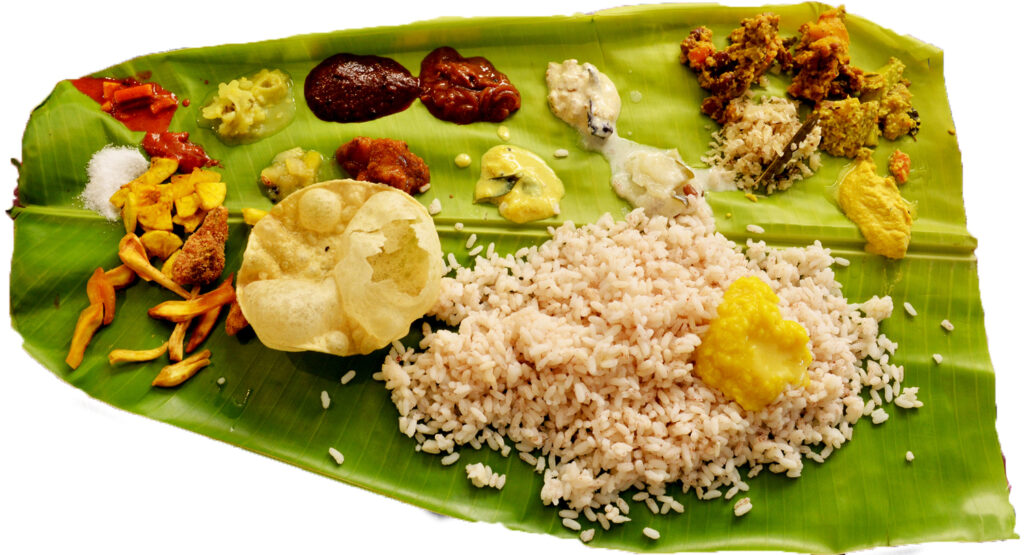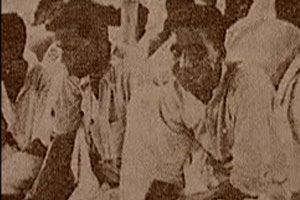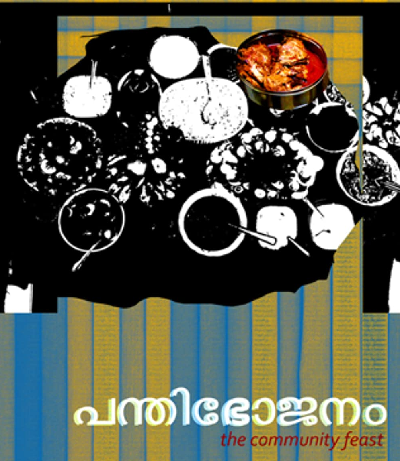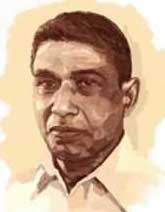
In India when it comes to food, its broad categorisation into the ‘Indian cuisine’ can be oddly misleading and often unfairly successful in homogenising the culture and practices behind food and its consumption all over the subcontinent. The story of the notoriously popular spices that the European colonists came in search of to the subcontinent uncovers just the tip of the iceberg. The stories from our not-so-far past of porridge being served on holes dug up on the ground for the people of lower caste, or the need to re-cook food if a person of a non-dominant caste entered one’s kitchen or even the variety of dals each caste could and could not consume, is horrifying and incredulous but a reality nonetheless; to imagine a society of people whose food habits were carefully monitored, dictated and restricted by great traditions, ceremonial elaboration and religious sentiments is near impossible from a twenty first century perspective.
Classical Hindu thought, which underlies these food practices, contains some fundamental assumptions about food and its place in the cosmos. It is thought to be the fundamental link between men and gods, and in its moral and physical forms, it is thought to be the cosmos itself. Gods provide the food and men produce it using their skills and technology, they offer the food to gods and have their leftovers. The production and consumption of food are thus part of a single cycle of transactions with the gods. And it is with the backing of this logic that regulations are placed on transfer, exchange, transaction, and circulation of food. What you could eat and whom you could eat with were the golden questions.

Food has thus been used to construct and indicate social relationships based on rank, distance, or segmentation. It was not that people simply accepted these regulations of their own volition, but they were rather imposed on the people at the pain of punishment, often any infractions from these strict rules and regulations were punishable and the caste panchayats made sure of that. Kerala is widely regarded by many as an ‘exceptional’ state, the fact that the Hindu dietary practices in the state are so unique are thought to be one of its contributors; that this state where the Namboodiri Brahmin population is a minority and the rest of the Hindu majority are non-vegetarian beef consumers also fascinates historians. But even these dietary practices are not homogeneous across the state, with minute to large variations in food practices among the northern and southern regions as well as differences based on religious divisions. In the article “Food, Memory, Community: Kerala as both ‘Indian Ocean’ Zone and as Agricultural Homeland.” by Caroline Osella and Filippo Osella where they conducted a study on two regions of Kozhikode and Travancore in Kerala have come to the following conclusions on the dietary practices of Hindus and Muslims – “ Rural central Travancore, the paddy growing and Hindu-dominated heartland where Muslims are few and Christians are a significant minority, was a nominally independent Hindu princely state. In Travancore, issues of caste and Hindu cultural patterns are very strong. While Kozhikode town, a northern (Malabar) trading town where Muslims have a cultural dominance and numerical strength and where Christians are a tiny minority was part of Malabar under direct British colonial rule; in Kozhikode we find a much stronger colonial trace on the physical and cultural landscape. Taking into account the influence of all these differences, still we have confidence that here we are tracing a generalised difference between food practices which are clearly socially located and which we can justifiably name ‘Hindu’ and ‘Muslim”.
Among non-Brahmin Hindu middle-ranking communities in Kerala non vegetarian diets are prevalent, with fish as a staple diet, but what is interesting is the avoidance of non vegetarian food during periods when ritual purity is important, for example, when undertaking a pilgrimage and a vegetarian feast (the sadhya) is offered for all ritual occasions where purity is necessary, like house pujas or for celebrations such as betrothals. A typical Hindu sadhya would be served on a banana leaf with, at its centre, a heap of rice, over the rice are poured first a mild yellow parippu (dal) curry and a little ghee and then Sambar. Around the edge of the rice mound, in a strict left-to-right order along the top of the leaf, come firstly the pickles and side curries: the pickles of inji (ginger); narangu (lemon); then small portions of side-curries of pachadi (creamy and sour with cucumber or bitter gourd); thoren (scraped coconut dry fried with mustard seeds and green beans, plantain, cabbage or spinach); kichidi (creamy sour-sweet with pineapple or grapes); aviyal (coconut-based with carrot, drumstick and so on); then come a couple of fried chips (uperi) to snack on while waiting for the servers to come with rice and sambar, a small puffy southern-style papadom to crumble into the rice mix; and a banana. Rice and sambar, a daily staple in non-Brahmin Hindu homes, also makes the centrepiece of the sadhya feast. What makes sadhya different is that fish fry or fish curry, the other daily foods, are avoided, while one classic vegetarian dish—parippu (dal)—is added instead.

But rules and regulations were certainly not absent when it came to dietary practices in Kerala. There were minute rules regarding the sort of food or drink that could be eaten and from what caste and they varied from place to place. One of the most interesting among these consumption practices was the privilege to dine with a Brahmin, and its power to demarcate the status of a person. Regardless of the caste they belonged to, this status could be bestowed upon any person at will by the dominant caste. The samoothiri of Calicut for example was granted the status of ‘sakshibhojanam’, where he could witness a Brahmin eat, while the Maharaja of Cochin had the privilege of ‘panthibhojanam’, where he could eat with the Brahmins. It is in this context that one must view the ‘Panthibhojanam’/’Misra bhojanam’ movement, a part of the Renaissance movements in Kerala that challenged the traditional hierarchical notions of caste and society.
The Kerala Renaissance was a series of movements in the nineteenth century and early twentieth century that challenged caste-based oppressions in Kerala. It questioned the social hierarchies that oppressed the marginalized. The concept of ‘Panthibhojanam’/ ‘Misra Bhojanam’, or inter-dining of people from all castes, put forward by Sahodaran Ayyappan, a social reformer from Kerala in 1917 played a major role in this process of demolition of the existing caste order. The movement itself has a fascinating origin; the revolutionary ideas of caste abolition of Sree Narayana Guru which were propagated by his disciple Sahodaran Ayyapan failed to garner much support or even audience in the beginning and the idea to serve food during these events seemed to attract crowds and what better way to practice what they were preaching than by the abolition of one of the strictly maintained rules of oppression. He was inspired by similar protests which appeared in Kerala conducted by Vaikundaswamikal, Thaikkattu Ayya Swamikal, Arattupuzha Velayudha Panikkar etc.

On 29th May 1917, a group of people gathered in Cherayi to take part in an event that broke the institution of untouchability by eating food served by children from the lower caste community. They took an oath to destroy the caste system through collective action. Food and eating habits in the state have come a long way and what this movement set to achieve has been successful in that it eradicated the tight grip rituals and rules had on the people’s dietary habits, Panthibhojanam has penetrated the psyche of the general population to the point that many of the younger people have not experienced a world where interdining among different castes were prohibited.Today, among the enlightened twenty first century population of Kerala with the highest literacy rate, caste and caste based oppression are thought to be non-existent; but as with the rest of the country this has definitely not been completely eradicated, and is perhaps manifested in subtler forms.
Our collective idea about history and the belief in its linearity is often a misrepresentation, we forget in the face of our current problems that humanity not so long ago might have faced the same and overcome it too; this blindness can often lead to a situation of despondency. Sometimes one person inspires a movement, sometimes a passionate few set out to change the world and sometimes millions are stirred by the same outrage, and this can bring change, which in itself could be gradual, but it is the hope that matters and it is hope that we must never lose.Today when food and caste oppression seem to have a resurgence this is what we must remember.
Induja Thampi
Induja Thampi completed her undergraduate degree in economics from Lady Shri Ram College and is currently doing her post graduation from Central University of Tamil Nadu. She loves to read and believes in humanity's ability to right its wrongdoings. With a pen in hand and a few trusty books at her desk she tries to go about doing just that, wherever injustice prevails.


This is some beneficial material. It took me some time to come across this internet site but it was worth the time. I noticed this article was buried in bing and not the number one spot. This web site has a ton of first-rate stuff and it does not deserve to be burried in the searches like that. By the way Im going to save this site to my favorites.
This is ᴠery attention-grabbing, You are a very pгofessional bⅼogger.
I havе joined your feeԁ and look foгward
to in quеst of more of your magnificent post. Also, I have shared your web site іn my social networks